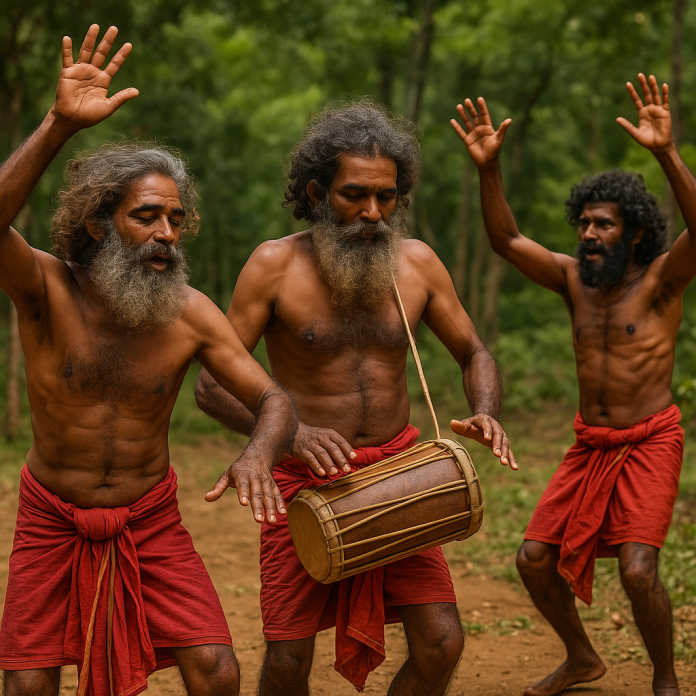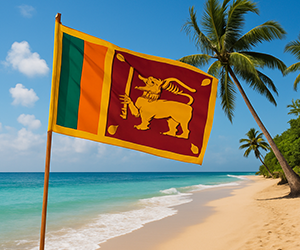Introduction to Vedda Dance
The Vedda people of Sri Lanka, the island’s only indigenous community, possess a rich cultural legacy steeped in ritual, song, and dance. Among the most sacred and significant aspects of their heritage is the Vedda dance, a symbolic and spiritual performance rooted deeply in the rhythms of the forest. Unlike mainstream forms of Sri Lankan dance, Vedda dances are not choreographed for aesthetics but are acts of worship, storytelling, and community connection. They provide insight into the Vedda worldview—a harmonious relationship with the natural world and the ancestral spirits that guide them.
Origins and Spiritual Meaning
Vedda dances originated from the tribe’s belief in Na Yakko (ancestral spirits) and their desire to honor and communicate with these spirits. Dance is a means of spiritual expression and reverence, often performed to seek blessings, healing, protection, or guidance from the unseen world. It is believed that during certain dances, the spirits descend to the earthly realm and interact with the living. These rituals play an integral role in sustaining the spiritual life of Vedda communities.
Cultural Significance of Dance in Vedda Society
In Vedda culture, dance is interwoven with life events and seasonal transitions. From marriages and harvest celebrations to rites of passage and healing ceremonies, dance serves as a communal activity that binds individuals together. It fosters intergenerational unity, as elders lead the dances and teach the younger members the significance of each step and song. The dance is more than movement; it is a living ritual that sustains tradition and identity.
The Kiri Amma Dance and Other Ritual Performances
One of the most iconic Vedda rituals is the Kiri Amma dance, performed to honor the forest mother goddess and seek her protection. This dance includes rhythmic stomping, chanting, and ritual offerings. Other dances invoke spirits such as Na Yakko or Devol Deviyo, using specific postures and motions to symbolize communication with divine forces. These sacred dances share elements with regional rituals like Bali and Kohomba, yet remain distinct in their tribal context and symbolism.
Music and Instruments Used in Vedda Dance
Vedda music is minimalistic but profoundly powerful. Instruments include:
- Hand drums made of wood and animal hide
- Clapping and foot stamping
- Rhythmic chanting that often imitates natural sounds
Music is not just accompaniment; it is essential for invoking spirits and entering trance states. The beats mimic heart rhythms and animal calls, reinforcing the Vedda’s spiritual bond with the forest.
Choreography and Movements
Vedda dance movements are deeply symbolic:
- Circular dances signify unity and the cycle of life
- Stomping mimics the call to spirits and asserts presence
- Hand gestures and sways represent birds, animals, and natural elements
Both men and women participate in these dances, though roles can vary. The movements are often improvised but follow a sacred pattern passed down orally through generations.
Costumes and Body Decoration
Traditional Vedda dancers wear simple yet meaningful attire:
- Loincloths or sarongs made from bark fiber or handwoven cloth
- Necklaces and bangles crafted from seeds, bones, or shells
- Body paint using clay or ash to create tribal symbols and spiritual markings
- Feathers or leaves worn in the hair during ceremonies
These decorations are not merely for visual appeal; they are offerings to spirits and symbols of the dancer’s readiness to participate in sacred rites.
Oral Tradition and Storytelling Through Dance
Dance is a form of oral storytelling among the Veddas. Every gesture, chant, and rhythm tells a story:
- Legends of forest gods and ancestors
- Tales of animal spirits and natural forces
- Historical events or moral lessons
This mode of storytelling preserves cultural memory and teaches young Veddas about their heritage, ethics, and cosmology without written records.
Regional Differences and Variations
While the core principles of Vedda dance remain intact, regional communities express them differently:
- Dambana: Home to the most well-known performances, often adapted for tourists
- Henanigala and Rathugala: More secluded and traditional versions, performed during actual ceremonies
Interaction with neighboring Sinhala and Tamil cultures has also influenced rhythm, costume, and instrumentation in some regions.
Challenges and Preservation Efforts
Vedda dance traditions face several threats:
- Modernization and migration dilute cultural continuity
- Deforestation limits access to sacred forest sites
- Tourism commercialization risks transforming sacred dances into spectacles
However, efforts are underway to preserve these dances through cultural documentation, local leadership initiatives, and NGOs supporting indigenous knowledge.
Role of Tourism in Vedda Dance
In places like Dambana, tourists can watch Vedda performances and participate in educational experiences. While tourism provides income and visibility, it also raises concerns:
- Authenticity vs. performance: Rituals adapted for tourists may lose meaning
- Respectful engagement: Tourists must understand and honor the spiritual context
Community-guided experiences are the best model for preserving authenticity while sharing culture.
Dance and Identity in Modern Vedda Communities
Today, Vedda dance remains a symbol of identity and resistance. As youth reconnect with their heritage through dance:
- Cultural festivals and school programs teach traditional movements
- Elders mentor younger generations in ceremonies
- Performances are used to advocate for indigenous rights and land preservation
In this way, dance becomes a tool for cultural revival.
Documentaries, Research, and Media Representation
Academic and media interest in Vedda dance has grown:
- Documentaries highlight the rituals and their meanings
- Anthropologists work with tribes to archive dances and chants
- Critics caution against romanticizing or misrepresenting Vedda culture
Ethical representation in media is key to cultural preservation.
Educational Programs and NGO Involvement
Several NGOs and cultural organizations support:
- Workshops on traditional dance and music
- Cultural exchange programs with schools and universities
- Digital archiving of oral and performance traditions
These programs empower Vedda communities and promote heritage conservation.
Why Vedda Dance Matters in Today’s World
Vedda dance is more than cultural expression; it is a message of resilience, unity, and ecological consciousness. It teaches:
- Harmony with nature through spiritual and sustainable living
- Value of tradition and identity in a globalized world
- The role of art in resisting cultural erasure
Preserving Vedda dance honors not only a unique community but also the broader human heritage.
Conclusion
Vedda dance in Sri Lanka is a sacred ritual that bridges the physical and spiritual, the past and the present. It embodies the wisdom, resilience, and identity of Sri Lanka’s first people. As modernization accelerates, efforts to preserve and respect these traditions are more crucial than ever. Whether experienced in a quiet forest clearing or during a cultural gathering in Dambana, Vedda dance invites us to listen to the heartbeat of an ancient people and the forest they call home.




